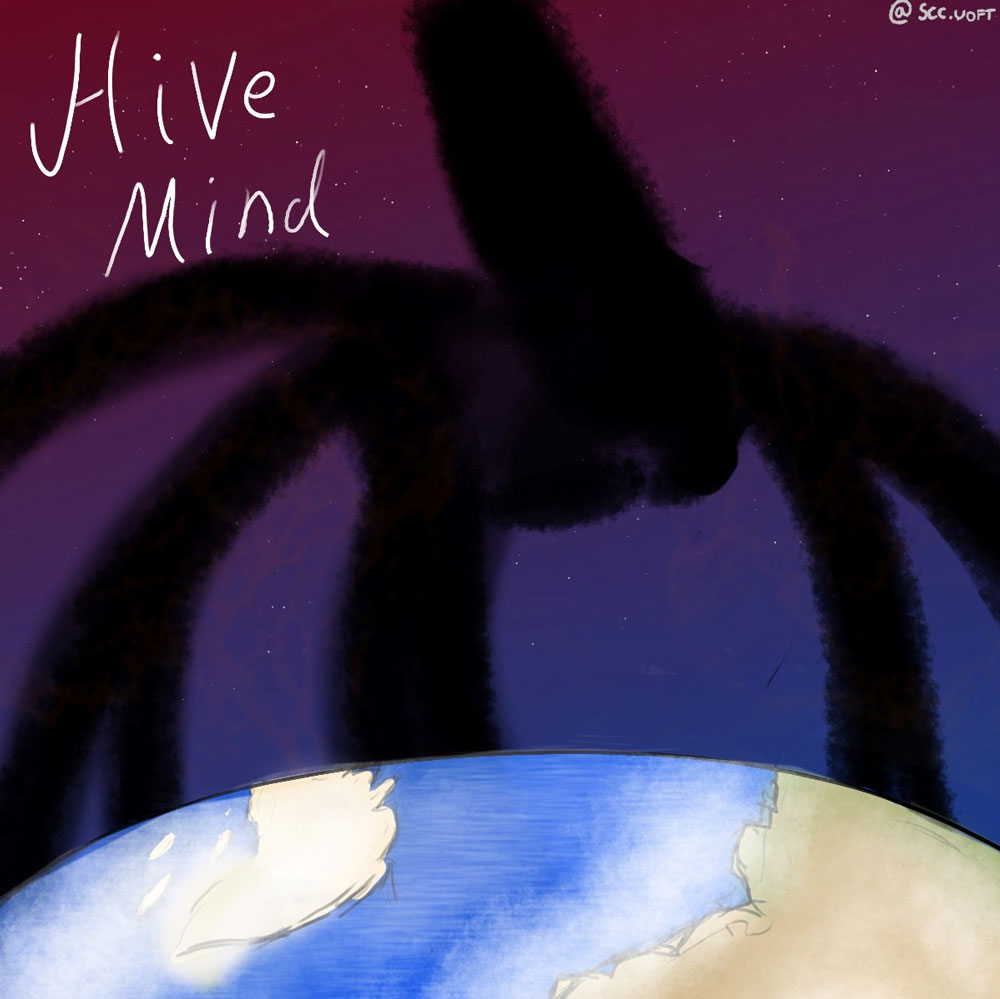
Written by Maia Dall’Acqua
Illustrated by Peter Hong
Superorganism, collective consciousness, hive mind. Lately, these words have been gaining attention online because of the hit TV show, Stranger Things. But while the public only recently became familiar with the Mind Flayer and its loyal Demogorgon soldiers, the phenomenon of a ‘collective brain’ has actually been around for millions of years.
The term eusociality is used to describe a colony of animals that function like a single, large organism. Classic examples of this lifestyle can be found in ants and bees, but many other organisms are eusocial like snapping shrimps and naked mole rats. Eusocial colonies consist of many individuals from the same species that live close together. They each have unique roles within the colony such as food collection, defense, or reproduction. What’s interesting about this social structure is that most of the individuals in it don’t reproduce. For instance, king and queen termites are the only fertile members of their colonies and as a result they are protected and served by the rest of the group. This is similar in ants and bees as well; the fertile queen is sheltered in the hive or anthill while the workers venture out to find food and defend the colony.
Organisms evolve to pass down the genes encoded in their DNA to the next generation through reproduction. So why would worker bees sacrifice this ability to help the queen produce her offspring instead? This mind-boggling aspect of eusociality is explained by kin selection. Kin selection is just a fancy way of saying that because the whole colony is very closely related, not every individual needs to reproduce; when the queen produces a lot of offspring, every member of the colony indirectly passes on their own genes. Think about it this way: if your sibling were to have a child, that baby would share some of their genes with you because you and your sibling share a lot of DNA. So by helping the queen create a lot of progeny, a worker can pass on their DNA many times over without even mating.
This idea also explains why some non-reproductive individuals sacrifice their lives for the safety of the colony. Soldier termites, which have large jaws and are specialized for defense, will rush to cover any open areas of their nest when a threat is present. This selfless behaviour is also seen in bees who often lose their lives stinging predators to keep them away from their hive. While they may die defending their colony, their genes live on indirectly through the queen.
So why do animals participate in eusociality? One of the main benefits is that living in a large group makes you a much smaller target. Imagine that you’re on a camping trip with 5 friends and you suddenly encounter an angry bear. Imagine you are on a camping trip with 5 friends, and you encounter an angry bear. You have about a 1 in 5 chance of getting eaten, unless you are a slow runner. If you were by yourself, the bear would certainly focus on consuming you immediately, but since you are with your friends, you are much safer. The same concept applies to eusocial colonies: most of the colony remains safe from predators because of the sheer number of individuals living close together.
Although we don’t encounter it in everyday life, eusociality has a huge impact on the Earth. Around 50% of all insect species have eusocial structures as do many important microbes. At first glance, the world of Stranger Things may be fiction, but it holds more biological truth than it appears. And although a herd of Demogorgons won’t come running after you anytime soon, you may want to watch out for angry termites defending their mounds.
Sources:
- https://www.nature.com/scitable/knowledge/library/an-introduction-to-eusociality-15788128/
- https://www.terminix.com/blog/bug-facts/getting-to-know-soldier-termites/
- https://en.wikipedia.org/wiki/Eusociality